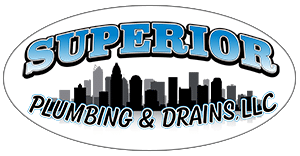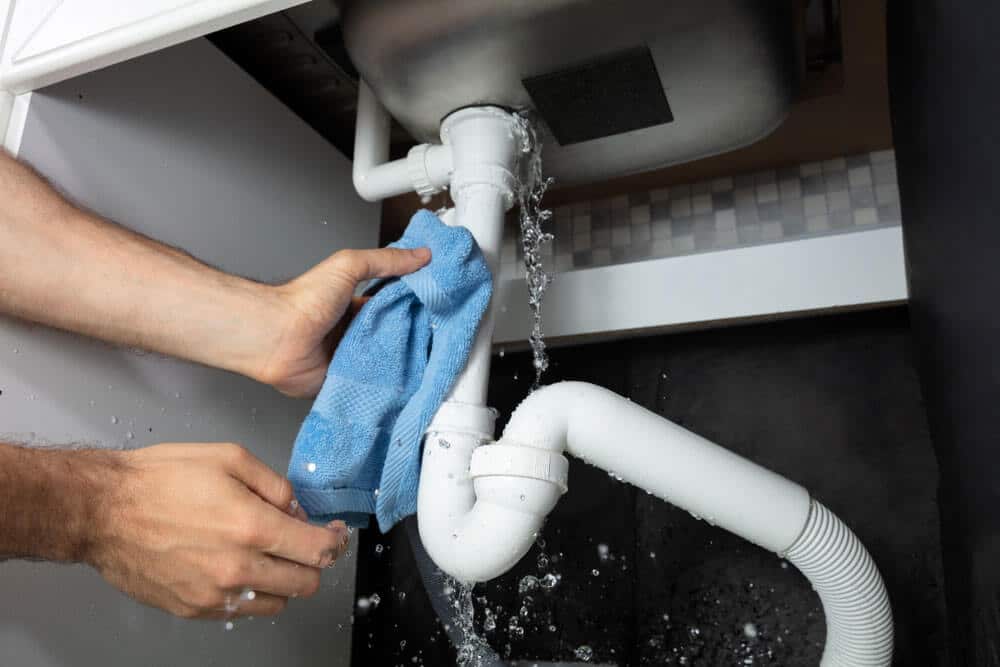So you’ve discovered the tell-tale signs of a leaky pipe in your home. Of course, you’ve contacted a plumber who specializes in emergency water leak repair. However, what should you do until they arrive?
If you leave a pipe or hot water tank leaking, it can cause damage to your flooring or walls or start a nasty mildew problem. You’ll need to (try to) secure the leak with a patch while you wait for your plumbers.
Find the Source of the Leak
Some leaks are easier to find than others. For example, if a water line under your sink is leaking, you can visually identify it quickly.
On the other hand, much of your bathroom plumbing is in the wall or under the floor. Consider the case of a leaking toilet. If you need to repair leaking toilet water, it could be the pipe leading to the toilet tank.
Unfortunately, the water on your bathroom floor could also result from a cracked bowl or a faulty wax ring. Hidden-source leaks are much harder to diagnose and require you to wait for a professional.
Can You Access the Pipe?
If you can identify the source of the leak, you should see if you can access the pipe. If you can, then it’s a good candidate for a temporary patch. If not, you’ll need to do something else to stop the leak in the meantime.
Stopping the leak without a patch usually means turning off the water until someone arrives who specializes in plumbing leak repair.
Shutting off the water is also the best solution if you have a water faucet leaking. In that case, you can simply access the shut-off valves under your sink to turn off the water.
If you do this, you stop the annoying leak without shutting off all water to the home, and you can turn the tap back on as needed. This temporary measure allows you to use the plumbing in the rest of your home as usual.
Clean and Dry the Pipe
Assuming you have identified the leak and can access the pipe, you must clean it and dry it. To do this, find the closest shut-off valve, and turn off the water. After doing this, turn on the nearest fixture to flush through any water sitting in the pipe.
Now, take a cloth and wipe down the pipe so that you have a dry work surface. Take this opportunity to wipe down the floor and walls, so these are dry as well. Your plumber will appreciate having a clean, safe work area when they arrive.
Try Tightening the Connections
Check any nearby connections, and tighten those up. You can do this with an adjustable wrench. Tightening gives you a better seal, and that can make your patch a bit more effective.
Prepare the Surface of the Pipe
No patch will work very well if you apply it to a pipe with a rough, uneven surface. There may be rust on the line, or there may be remnants of a previous patch. You can use a bit of sandpaper to smooth things out.
Choose your Patch
You have many options when it comes to patching a leak while you wait for pipe or water faucet repair. Here are a few things you can try:
Plumbing Repair Tape
Tape is an easy, inexpensive solution. However, it is very temporary. You can find plumbing repair tape at your local hardware store. Once you do, simply follow the instructions on the package.
Be aware that this fix is only going to last a few days at most.
Epoxy
Epoxy is a compound that comes in a tube. It’s also known as plumber’s putty. In some cases, epoxy repair kits come with two tubes or jars of material that you must mix before applying it to the pipe. Follow the package instructions to fix minor leaks for the short term.
Plumbing Repair Clamp
A plumbing clamp is an inexpensive solution that often gets overlooked. Plumbing clamps are simple metal clamps with soft rubber padding on the inside.
You position the clamp with the rubber covering the leak. Then, you use the screws provided to tighten the clamp. If you apply it correctly, the rubber will seal around the hole to temporarily prevent further leaking.
Repair Sleeve
A repair sleeve is similar to a repair clamp, except that it’s a sleeve. A sleeve is designed to slide over a leaky pipe, not wrap around it.
The average homeowner might struggle with this, as it requires you to disconnect the leaking pipe, slide on the repair sleeve, and reattach the plumbing. However, these come in large enough sizes to work for a sewer line or water main leak repair.
Patches Are Temporary Fixes
If you apply a patch correctly, it will be quite effective. You may be tempted to use this as a long-term solution. Unfortunately, this is a bad idea. A crack or hole in a pipe can expand over time and cause more of a leak than your patch can handle.
Instead, it’s best to see this as a temporary fix until a qualified plumber arrives.
Superior Plumbing and Drains for Emergency Leak Repair
Before you search for “water leak repair near me,” consider Superior Plumbing and Drains. We have served the Charlotte, NC, area for more than 30 years and offer emergency services to protect your home from the effects of leaking pipes.
Do you have a leaky pipe? Contact us for help by calling (704) 289-6858. We’ll send a professional right away!





